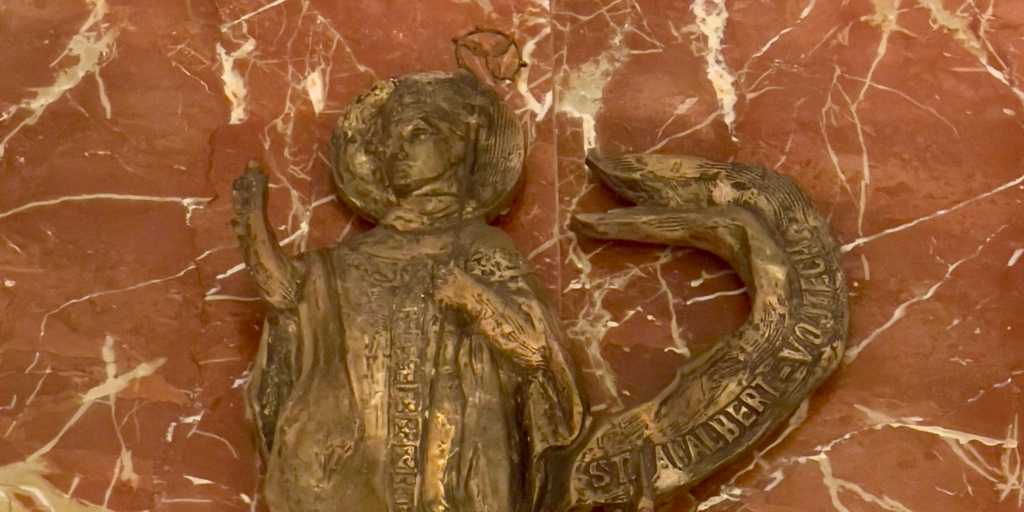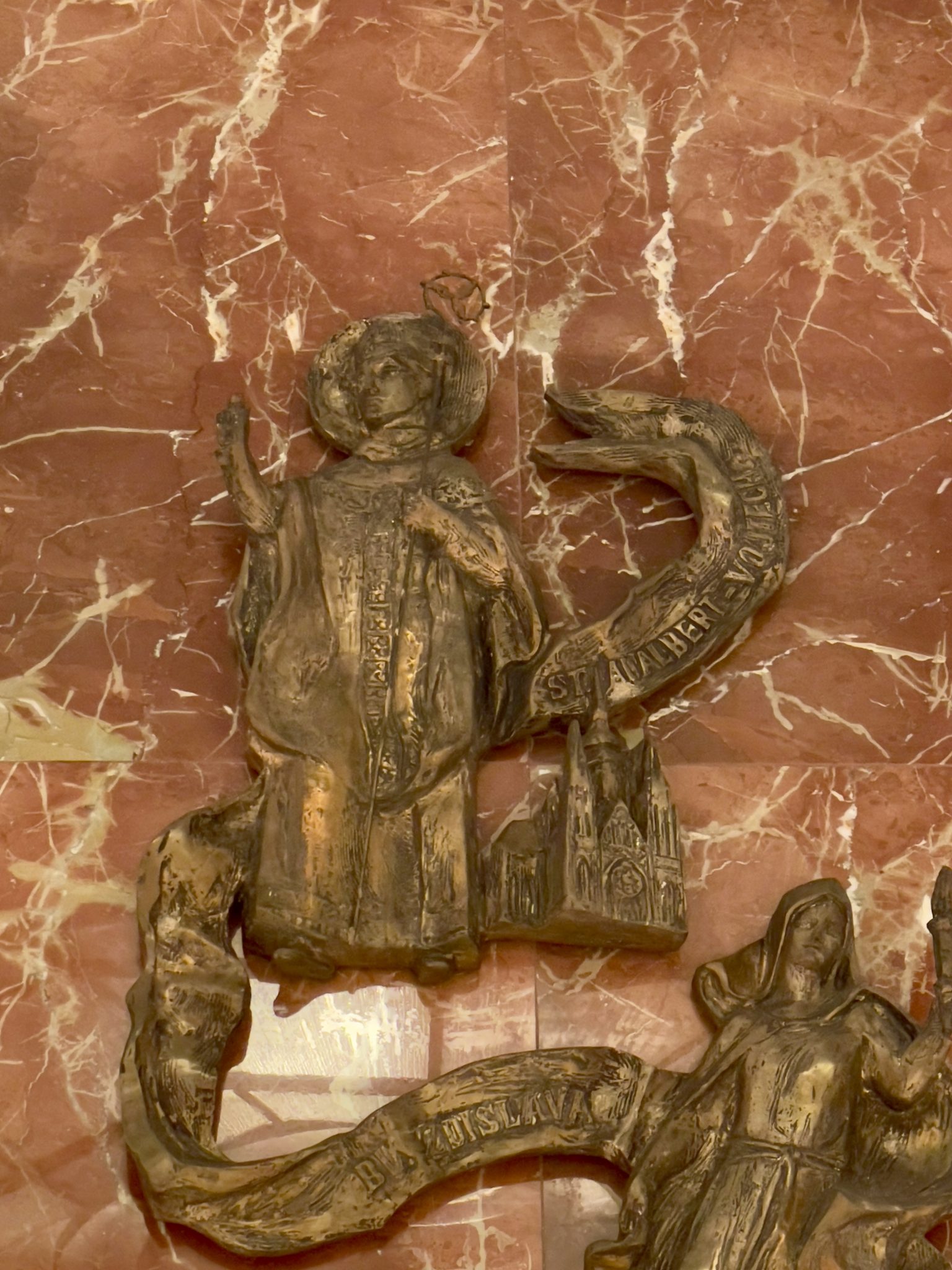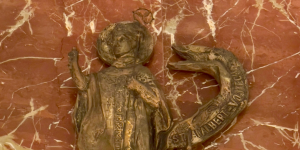
“It is an easy thing to wear the mitre and a cross, but it is a most dreadful circumstance to have an account to give of a bishopric to the judge of the living and the dead.” – Saint Adalbert of Prague
On April 23, the Church celebrates the feast day of Saint Adalbert of Prague. Despite facing untold animosity and persecution in his hometown, Adalbert remained vigilant in his efforts to share the gospel with the people of the Baltic Region. This month, as we recognize the anniversary of his martyrdom, we invite you to learn more about his life and legacy and where he is portrayed in the Basilica.
Saint Adalbert’s Early Life and Education
A child of European nobles, Saint Adalbert was born in Bohemia in approximately 956 A.D., and given the name Wojtech. During his youth, he was overcome with a life-threatening illness, and his parents pleaded with the Lord to restore his health. Like Hannah in the Old Testament, who dedicated her son Samuel to the service of the Lord in exchange for his life, Wojtech’s parents declared they would commit their son to the priesthood if God let him live. Miraculously, he recovered, and keeping their promise, his parents sent him to Magdeburg to be tutored by a Benedictine missionary, Archbishop Adalbert. Upon his confirmation, Wojtech’s name was changed to that of his mentor, Adalbert, as the Archbishop felt that Wojtech’s life would be similar to his.

Work in Bohemia and Beyond
Following the death of the Archbishop in 981, the young Adalbert went back to Bohemia, and two years later, he was ordained a priest by the Bishop of Prague at age 27. When the Bishop passed away later that same year, Adalbert stepped into the role and set to work transforming his diocese. Adalbert was zealous in his efforts to improve the local church, preaching multiple times a week, visiting the poor and imprisoned, and even establishing a new budget. However, after about six years, Adalbert felt that little progress had been made with the Bohemians, and when an angry crowd killed an adulteress one day despite his attempts to protect her, he requested that the pope allow him to retire from his position as Bishop. The pope granted his request, and Adalbert retreated to a monastery in Rome, where he volunteered to assist with the monastery’s upkeep and other menial tasks.
After five years, Adalbert was sent back to Prague to minister to those in his hometown. Although initially the townspeople acted as though they wished to turn away from their wickedness, they were not truly repentant or ready to be guided by him, so Adalbert departed once more, this time to pursue mission work in Hungary. While there, Adalbert shared the Gospel with many, including King Stephen I, who became the nation’s first Christian king.
Saint Adalbert’s Final Years
Some time later, Adalbert was called back to Prague so that he might again serve in his home diocese. However, when a Bohemian prince slaughtered members of Adalbert’s family in response to this news, Adalbert decided it would be too perilous to return, and chose to work as a missionary near the Baltic Sea instead. There, he helped lead many to Christ, until some of the pagan tribes accused him of being a spy, and others grew angry with him for condemning their practices of human sacrifice and tree-worship. On April 23, 997, a pagan priest abducted Adalbert in his sleep and murdered him. As Jesus begged the Father to have mercy on those putting him to death, so Adalbert pled with God for the soul of his attacker. His body was recovered by a Polish prince in exchange for Adalbert’s “weight in gold,” and he was buried at the church in Gniezno for a few decades before being transferred to the Saint Vitus Cathedral in Prague in 1039. Canonized in 999, Adalbert is portrayed in a bronze sculpture made by artist George Mathisen in the Our Lady of Hostýn Chapel in the Crypt Church.
Sources:
“Saint Adalbert of Prague,” Franciscan Media
“St. Adalbert of Prague,” Catholic.org
“St. Adalbert of Prague,” Catholic News Agency

